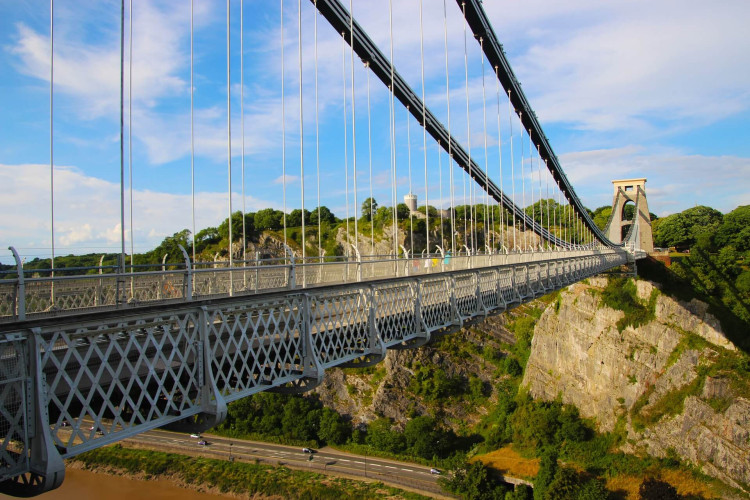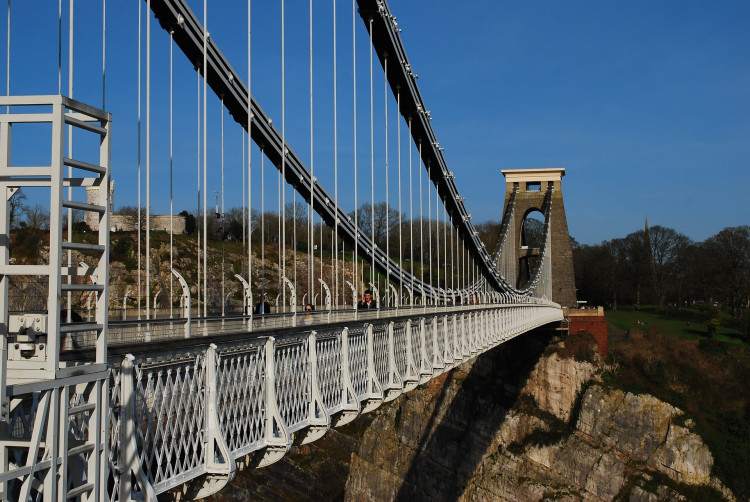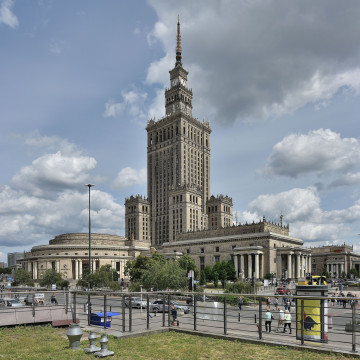Clifton Suspension Bridge in Bristol (United Kingdom) - Victorian nineteenth century bridge
Where is located Clifton Suspension Bridge?
Address of Clifton Suspension Bridge is Bristol, England
show on map
When was built Clifton Suspension Bridge?
Built date of Clifton Suspension Bridge is 1836-1864

Facts, informations and history of Clifton Suspension Bridge
This 26-meter high bridge is supported by old iron chains.The main span is 214 meters (702 feet) long. The bridge looks great due to its height, it is located 76 m (250 ft) above the surface of the Avon Gorge below it.
Its shape is characteristic of this period, noble appearance and pylons, which have decorations in the form of sphinxes and hieroglyphs, were inspired by Egyptian culture.
Construction of the bridge was delayed due to lack of funds, was completed after Brunel's death, after using chains from his other work, Hungerford Suspension Bridge.
For over 100 years the bridge was the symbol of Bristol, like the Eiffel Tower of Paris, or the Opera House symbol of Sydney. Since its opening in 1864, the scrupulously made supports have ensured that the bridge has never been closed. It is difficult to imagine that this structure, which was designed in the 1930s, and built in the 60s of the same century and intended initially for transport for carts and horses, now carries a total of over 4 million cars a year.
Since 1991, pedestrians and motorcyclists have been crossing the bridge at no charge, but now a new toll collection system has been introduced. Special magnetic cards are sold on which a number of journeys are stamped, after its exhaustion a new transit card must be purchased. For example, 100 trips for 27 $, or 1000 trips for 120 $. Before entering the bridge, travelers are required to apply their cards to a special reader, which will check whether they can pass or not, and warns about the ending runs.
In recent years, the bridge was illuminated at night, but since 1991 a fault in the lines has forced the administration to look for more modern and more effective lighting systems. The sequence of single lights has been replaced by shiny rods.
In 1836 a steel beam was moved over the river. Brunel went first through the bridge. By 1843, both towers were ready, but there were no funds for the rest of the construction. The construction of the bridge was delayed, it was completed only after Brunel's death, after using materials from his other work, the Hungerford Suspension Bridge. To save money, the height of the towers has also been reduced. Until December 8, 1864, chains, 4,200 beams, and 500 tons of stones were laid out as a substructure and pedestrian lanes, then a ceremonial opening ceremony took place.
Architect of Clifton Suspension Bridge

Construction/building type
Building Clifton Suspension Bridge is of type Bridge
Architectural style
Architectural style of Clifton Suspension Bridge is Functional Victorian
Other dimensions, parameters and frequently asked questions

How many meters have Clifton Suspension Bridge?
Clifton Suspension Bridge have length 214 meters
What material is the building made of?
Clifton Suspension Bridge is made of the following materials: Iron
Official website
The official website of the building, where up-to-date information can be found, is http://www.cliftonbridge.org.uk
Photo gallery Add photo
Location on map / How to get there



















Comments to Clifton Suspension Bridge (12) Average rating: 4,0 Add comment / Rate building
Based on 12 comments